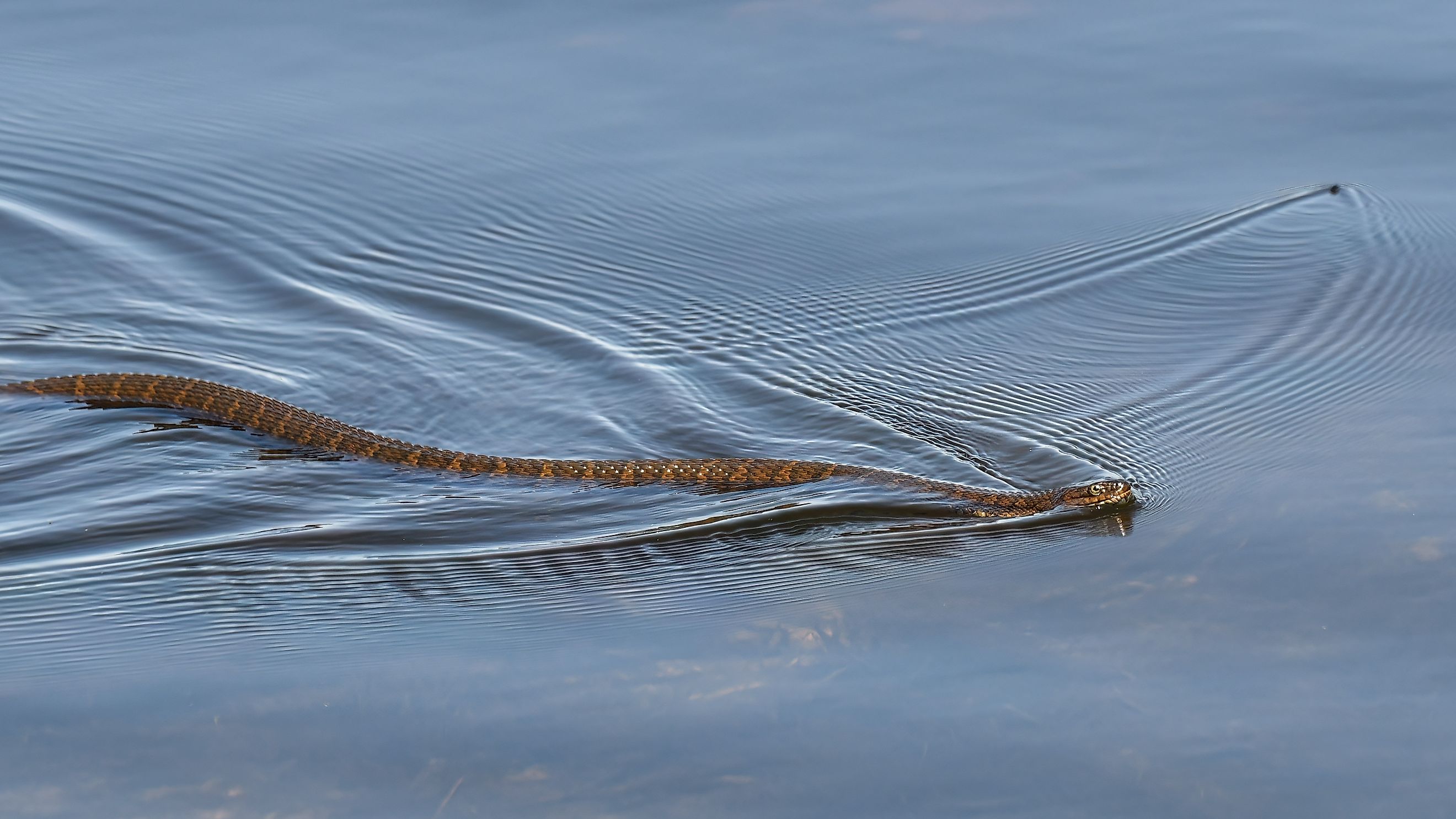
The Most Snake Infested Lakes In Pennsylvania
Pennsylvania, the fifth most populous state in the United States, is a haven for outdoor tourism. The state boasts natural attractions like the cascading Delaware River and the Great Lake Erie, offering ideal spots for recreation such as swimming, boating, and fishing. These areas are also rich in wildlife, including various snake species. Among Pennsylvania’s lakes, some are known for being particularly snake-infested, home to both harmless and venomous species. This article covers the state’s most snake-infested lakes, providing useful information to make outdoor activities in Pennsylvania safer and more enjoyable.
Lake Wallenpaupack
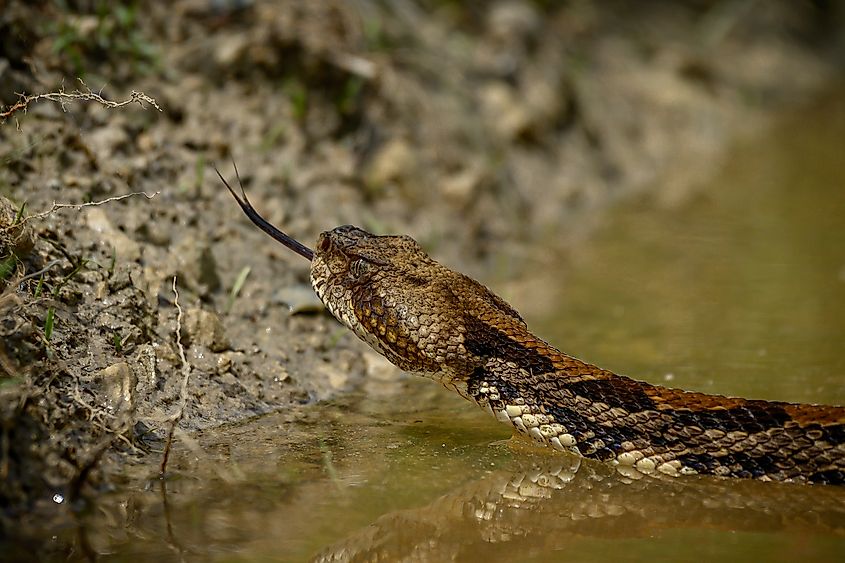
Lake Wallenpaupack is a man-made lake in Northeastern Pennsylvania. It was created in the 1920s by the damming of the Wallenpaupack Creek and has since become a prominent natural landmark. Today, the lake boasts a surface area of 5,700 acres and a shoreline in excess of 50 miles (80 km). The lake is also ideal for recreation, and people can always be seen boating and swimming in the summer. Similarly, fishing is popular with species like smallmouth bass, bluegill, and rainbow trout found throughout the waters.
Along with the prominent fish population, Lake Wallenpaupack is also home to plenty of snakes. Often considered the most snake-infested lake in Pennsylvania, northern water snakes are abundant here. This species is noted for its brownish color and prominent dark crossbands across its body. While common watersnakes are large, reaching up to 135 cm (4 ft 5 in), they are non-venomous, so visitors don’t need to worry too much. On the other hand, timber rattlesnakes, a venomous species, are also known to roam the surrounding forests, so it is best to keep an eye out for all snakes in Lake Wallenpaupack.
Beltzville Lake
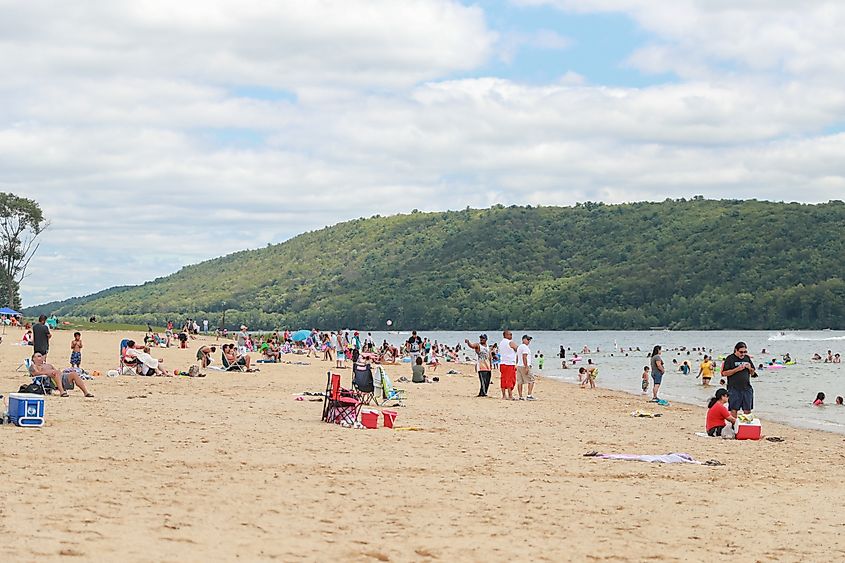
Located within the 3,000-acre Beltzville State Park, Beltzville Lake is probably the most recreation-focused lake on this list. The 950-acre body of water is always full of life, whether it is people sunbathing along the sandy beach or swimming in the calm waters. Like Lake Nockamixon, this lake is also a resting spot for migrating waterfowl and an excellent habitat for many animals.
Those weary of snakes should look out for the shorthead garter snakes that call Beltzville Lake home. Reaching lengths of 22 inches (56cm) on average, this snake is much smaller than most species in the state. That said, its deep olive coloration and yellow stripes create a sight that might scare those with ophidophobia. While they are not technically venomous, garter snakes have mildly toxic saliva, which can cause slight pain and irritation if bitten. Apart from the shorthead garter, the northern watersnake can also be found in and around Beltzville.
Lake Erie
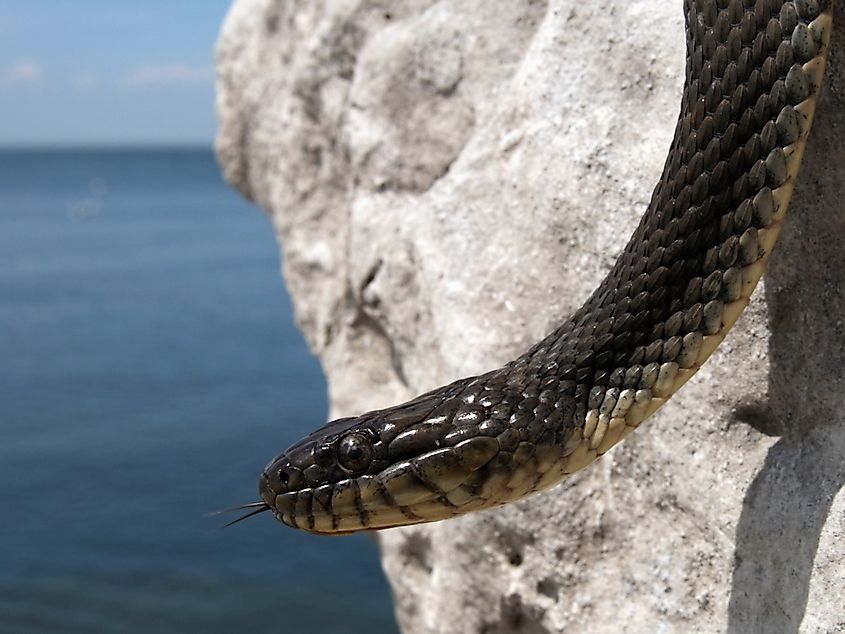
Part of the Great Lakes in North America, Lake Erie is the eleventh largest lake in the world. This behemoth water body boasts a surface area of nearly 10,000 square miles (25,900 sq. km.) and a maximum depth of 210 feet (64 m). It is also home to dozens of islands, coastal parks, connected rivers, and coastal towns, providing life to various ecosystems. To this end, it is no surprise that Lake Erie is a hub for tourism, seeing over 10 million visitors per year.
Lake Erie also has a special place on this list as it is both snake-infested and has its own species of snake. The Lake Erie watersnake is a subspecies of the common watersnake found only in Lake Erie’s islands. It has an average length of 23 - 28 inches (59 - 71 cm) for adult males and features a dark gray appearance with light brown bands. The snake tends to be quite calm and is not venomous, so people don’t need to worry about it. Apart from the Lake Erie watersnake, Lake Erie is home to the common garter snake, northern brown snake, and eastern milksnake.
Lake Nockamixon
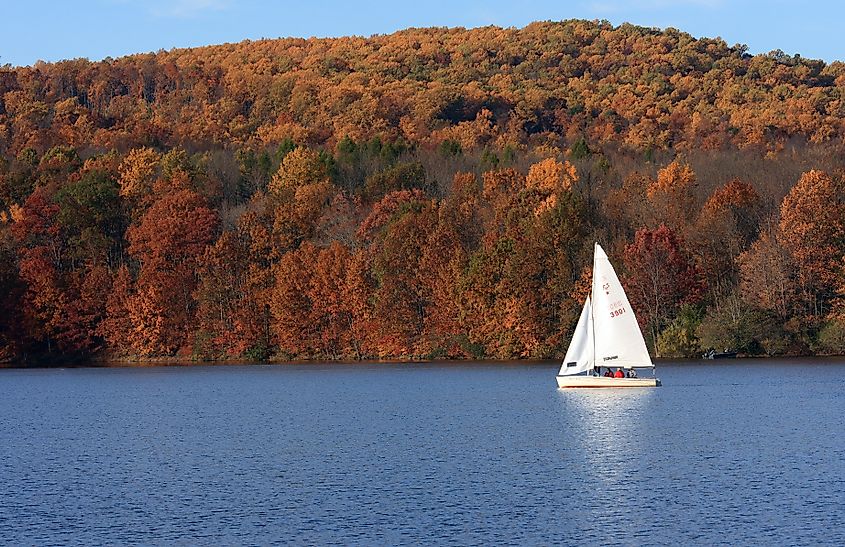
The largest lake in Bucks County, Lake Nockamixon, is a scenic reprieve in Pennsylvania. The lake spans a total surface area of 1,450 acres and is a prime location for tourism and wildlife. For humans, the lake and adjacent Nockamixon State Park provide a marina, boat launches, and boat rentals to enjoy the water. While swimming isn’t allowed, fishing and sailboating are popular, and there is even a dedicated sail club for the lake.
On the other hand, wildlife is also an important part of the lake, as it is home to all sorts of animals. From being a rest stop for migrating fowl to providing a habitat for local snakes, there is no shortage of animals in Lake Nockamixon. When it comes to snakes, the two most common species here are the common watersnake and the black rat snake. The black rat snake lives in central North America and is known for its swimming prowess and dark coloration. Average males reach lengths of up to 6 feet (183 cm), making them quite an intimidating presence in the water. Thankfully, they are non-venomous and tend to avoid humans.
Allegheny Reservoir
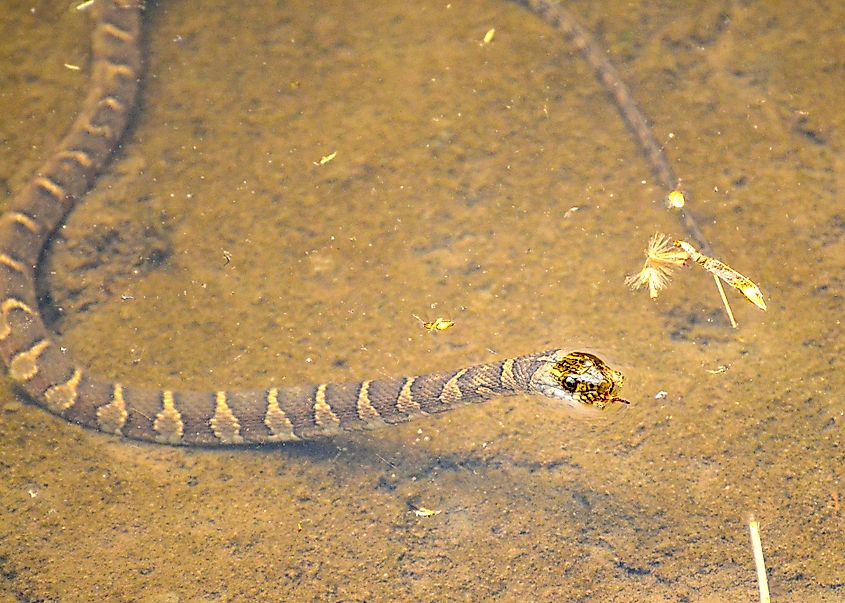
Nestled along the Allegheny River, the Allegheny Reservoir was created in 1965 by the construction of the Kinzua Dam. Since then, the reservoir has become a popular body of water in the Allegheny National Forest, boasting a surface area of 12,000 acres. With thick forests and wilderness on all sides, snakes are bound to find this lake a popular spot to live. The most common snakes found here include the northern watersnake and the timber rattlesnake. Visitors should be cautious of the timber rattlesnake, one of the most venomous species in the state, identifiable by its distinctive dark brown crossbands on a light brown body. Northern copperheads, also venomous, are occasionally spotted in the Allegheny Reservoir and should be avoided due to their potent venom.
These lakes scattered throughout Pennsylvania’s scenic landscapes are charming destinations for any outdoor lovers. That said, along with the recreational opportunities, it is also important to consider the snakes in them. While most species are harmless, some, such as the timber rattlesnake and northern copperhead, warrant attention. Thus, for visitors heading to these lakes, it is always ideal to carry a snake bite kit or learn about the behavior of local snake species.











